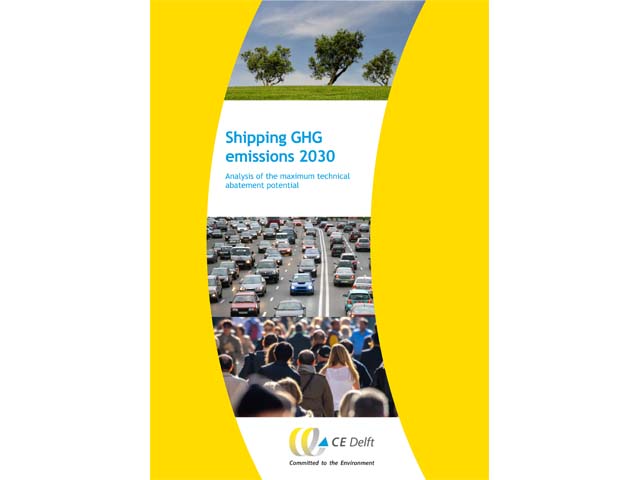A recent report from Dutch consultancy CE Delft has concluded that it should be technically feasible to reduce shipping emissions by between 28% and 47%, relative to 2008 figures, before 2030.
The report, Shipping GHG emissions 2030, Analysis of the maximum technical abatement potential, suggests that achieving these emission reductions would require:
- a speed reduction of 20-30% relative to 2018;
- widespread adoption of wind-assisted propulsion on ships for which it is technically feasible to do so; and
- 5-10% of the energy from zero-GHG fuels.
However, there is a downside – CE Delft considers that implementing these measures would increase shipping costs by 6%-14% on average, relative to BAU.
The maximum technical abatement potential amounts to approximately 175m–350m tonnes CO2 equivalent on a Well to Wake basis per annum, depending on the BAU emissions in 2030. When introduced gradually from 2025, the measures could avoid cumulative emissions of 500–1,000 Mt CO2e.
About half of the emission reductions result from lower speeds and other operational measures, with the remainder from wind-assisted propulsion and other operational and technical measures, and adopting zero- and near-zero-GHG fuels.
Guido Schulte, MD Maritime Technologies and Sales Director Marine and Offshore at Finland-based ship design and engineering consultant Elomatic said: “Reaching the ambitious targets for GHG is principally achievable, but it will require a combination of measures to be in place. Many of these can be traced right back to the design phase. From introducing lower speeds, new operational measures, technical measures, including alternative fuels, all rely on scrutiny and innovation from the outset. Implementation of these measures is a challenge for today’s ship designers. Decisions that designers make now will define the future for both new ships and vessels adopting new technology. We not only need to iterate rapidly to find the best combinations of technologies, fuels and operational measures, but will also need to simulate vessel performance to ensure that they can meet their commercial goals while reducing emissions. This design challenge necessitates a new level of resource and expertise to be brought to the table. From in depth evaluations on safety, usability, and energy efficiency; to specifics around hull form optimisation and understanding new fuel types and the nuances they bring with them – this is a challenge that in the first instance needs significant insight from the world’s ship designers.”



